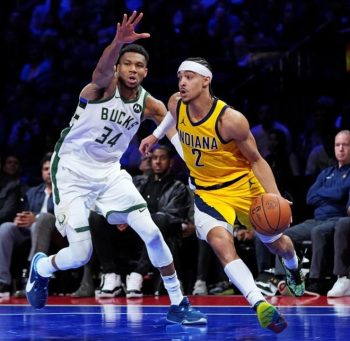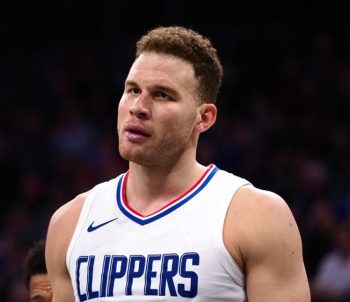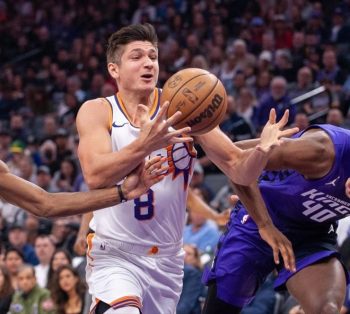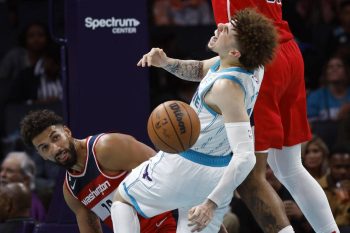NBA
NBA AM: Jumping Around NBA Summer League
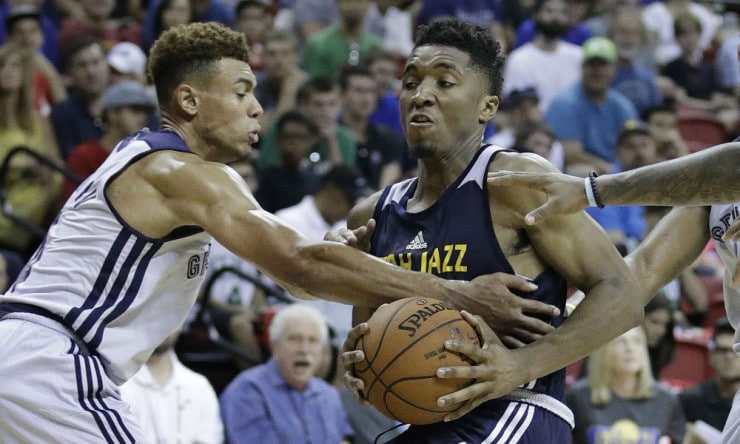
As we reach into mid-July, the final remnants of real-ish NBA basketball begin to flame out as NBA Summer League comes to an end. Basketball Insiders’ Ben Dowsett recently spent a few days in the desert collecting observations and rumors from around the association – here are a few big areas to keep in mind, both on and off the court.
Standouts
Summer League always produces a few standouts – some expected and others relatively out of nowhere. With apologies to guys like Dennis Smith Jr. (perhaps the tournament’s best overall player, but one this eye didn’t get a chance to watch in person), Bryn Forbes, Rashad Vaughn, Wayne Selden and a few others, here are three that stood out the most for various reasons.
Jayson Tatum, Boston Celtics: Tatum showed up to Salt Lake City for Jazz Summer League already on fire, and there hasn’t been much in the way of extinguishers around since then. The third overall pick is making plenty of Bostonians feel good about the selection, and about rumors that Tatum sat alone atop Boston’s pre-draft board.
Scouts in attendance loved Tatum’s NBA-level game with the ball in his hands; not just his shot-making, but his ability to find his spots effortlessly. That kind of stuff takes plenty of guys with his skill set years to master. There are still moderate concerns about his abilities and effort level defensively, and about what he can do off the ball – something that will be a big factor early in his career with guys like Isaiah Thomas and Gordon Hayward in Boston. But he appears easily ready to torch bench units at the NBA level already, and since it looks like he’ll be doing plenty of that in his role as a rookie, it’s hard for Boston fans not to be thrilled early on.
Donovan Mitchell, Utah Jazz: The only guy who’s had any sustained success stopping Tatum from getting whatever he wants offensively thus far this summer? That’d be Jazz draftee Donovan Mitchell, who has fans in Utah frothing at the mouth as they search for a new hero following Hayward’s departure.
Mitchell gives up several inches in height Tatum, but after watching the third overall pick torch other guys for the first quarter of their Jazz Summer League matchup, the former Louisville asked for the assignment personally. A couple steals, a stare-down and a wicked spin move that put Tatum on the ground made the highlight reel, but the degree to which Mitchell removed Tatum from Boston’s offensive game plan for those final three quarters was more awe-inducing at the time. Other positive areas may need a healthy grain of Summer League salt before we’re convinced, but it feels like Mitchell is primed to be a fearsome on-ball defender from the moment he steps on a real NBA court.
Unsurprisingly given their operating guidelines, the Jazz are slowing the brakes on the Mitchell excitement behind the scenes. He still has some major chucker habits to rid himself of, plus work to do as a lead ball-handler and off-ball defender. But his success this summer – almost exclusively against other high-level prospects expected to be in the NBA next year, by the way – is hard to ignore. He has a beautiful shooting stroke, ridiculous athleticism and the sort of character the Jazz prioritize more than maybe any other team in the league. Don’t be surprised if you hear the name a lot more moving forward.
Kyle Kuzma, Los Angeles Lakers: All the attention from the pro-Lakers crowd that always fills Thomas and Mack Arena has justifiably been on the Lonzo Ball show. In a cumulative sense, though, Kuzma has been the Lakers’ best player so far this summer. The former Utah Ute has quietly been putting up numbers that compare pretty favorably to a standout like Tatum, displaying a skilled all-around game. It’s tough to say which parts of this will translate to the full-time NBA and which will die among more gifted athletes, but Kuzma is off to a strong start.
Attendance
It felt like temporary Lonzo mania early on, and maybe it was; per the league, that Saturday July 8 (Ball’s first game) set the single-day Summer League attendance record with a full sellout of 17,500 tickets.
Things never really slowed down, though. Teams like the Clippers and Kings were playing to packed lower bowls, and the league reports that this year’s tournament is on pace to break the single-year attendance record. League folks are thrilled with the brand that’s been established in Vegas, plus high TV viewership numbers on both ESPN and NBATV. This all bodes very well for NBA fans who can’t go without their July fix each summer.
Quality of Play
Both league and team folks commented on the overall level of play this summer. There are always standouts and guys who are clearly too good for this level, but the number of those guys feels larger than normal this year.
As one team executive put it, though, the more impressive part talent-wise might be at the lower end of rosters. There are just more talented players than ever coming to Vegas to show their skills to all the league’s decision-makers, even guys who are big long shots to catch on with an NBA squad. There’s a knowledge that exposure here can lead to success in areas beyond the NBA – in Europe or perhaps at the revamped G-League level, where there will be more opportunities to shine and crack the big show in upcoming years.
For that reason, you’re seeing fewer and fewer total zeroes out there on the court, even at the bottom of rosters. In turn, this could make teams more willing to send their best young guys and keep them active for longer in the future – real experience among high-level teammates and opponents is more valuable than time against scrubs.
Board of Governors
Summer League also marks annual Board of Governors meetings, and true to form in a league office that moves quickly under Adam Silver, a few big changes have already been reported. One is a change in the trade deadline, which will now move to the Thursday that falls 10 days before the NBA All-Star Game each year. This means any traded players will have the break to situate themselves in their new homes, though some folks are intrigued to see what happens the first time a guy selected to the All-Star team in one conference is traded to the other before the game. This is one to revisit in a couple years.
The other change is far more significant for in-game play, and involves the reduction of timeouts to speed up game flow. The changes can be found in full here. A few of the most important:
- The maximum number of timeouts per game between both teams will decrease from 18 to 14.
- “Full” and “20-second” timeouts, neither of which were really truthful in their labeling in the first place, are gone. Each team will now have seven team timeouts for the entire game, all of which will be 75 seconds in length.
- All four quarters will have mandatory timeouts at the first stoppage under seven and three minutes. This replaces the previous system, in which the second and fourth quarters had different mandatory timeouts than the first and third.
- Each team can enter the fourth quarter with up to four timeouts, but will be limited to just two under the three-minute mark (or after the second mandatory timeout in the quarter) – coaches can’t hoard timeouts for the end of games, effectively.
This is a clear effort from the league to reduce certain unsightly parts of their game-ending product. Lots of NBA diehards have long pined for a system closer to FIBA, where players’ creativity and guile under pressure is tested more regularly in close games. This isn’t that, but it’s a step in that direction.
The larger effects, though, might come in scenarios nowhere near the end of the fourth quarter. Many of the league’s coaches structure their substitution patterns at least partially around those mandatory timeouts; one reason among many that plenty of star-level guys previously would play most of the first quarter before sitting early in the second was the fact that coaches could “buy” them more rest.
A guy could come out at the 3:00 mark of the first quarter and get three lengthy broadcast timeouts to rest: the three-minute timeout in the first quarter, the end-of-quarter break and the mandatory nine-minute timeout in the second quarter. They could get more actual time on the bench than certain other guys who sat for longer chunks of game time.
How things change with the new mandatory system is yet to be seen, but things will definitely change. Fewer timeouts overall means depth will be at more of a premium – something other folks have already noted, and something team people are already hard at work planning for. More coaches have already been utilizing multiple rest periods per half for high-minute players in recent years, and this could increase in some cases as bench bosses try to keep their guys fresh without holding them off the court for too many in-game minutes.
There will surely be a few unintended consequences as well, and the smartest minds are already trying to crack them in advance. There really isn’t anyone complaining about this one for now, but we’ll see if that remains the case once the actual games get started. NBA fans can whine about just about anything if you give them time.


